
WEBTo make stainless steel, the raw materials—iron ore, chromium, silicon, nickel, etc.—are melted together in an electric furnace. This step usually involves 8 to 12 hours of intense heat. Next, the mixture is cast into one of several .
WhatsApp: +86 18203695377
WEBJun 7, 2023 · The chemical process in the production of steel from haematite ore involves oxidation followed by reduction. Ferrous oxide is oxidized to ferric oxide. 4FeO + O 2 → 2Fe 2 O 3 Ferric oxide is reduced to iron metal. (Fe_2O_3+3COxrightarrow{400°C700°C}2Fe+3CO_2)
WhatsApp: +86 18203695377
WEBA method used to release iron metal from its ore involves _____. burning leaves. Which of the following is an example of a chemical change? ... The process of _____ often begins with a creative guess or a surprising observation. measurements, facts, and descriptions.
WhatsApp: +86 18203695377
WEBThe manufacture of iron from iron ore involves the process of. 1) Oxidation. 2) Reduction. 3) Fractional distillation. 4) Electrolysis.
WhatsApp: +86 18203695377
WEBThe chemical processes in the production of steel from hematite ore involve reduction followed by oxidation.
WhatsApp: +86 18203695377
WEBNov 1, 2023 · Bauxite residue (BR) is generated as a byproduct of the Bayer process. Approximately tons of BR is generated per ton of alumina production but the quantity of bauxite residue depends upon on the quality of the processed bauxite ore and the processing parameter (Primary Aluminium Production).The annual generation of BR in .
WhatsApp: +86 18203695377
WEBApr 1, 2021 · After correction to account for the cost of iron ore preprocessing (grinding and melting), the total energy requirement rises up to GJ t Fe −1. This value is potentially lower than current most efficient iron production routes based on the blast furnace [22]. Potential integration of the Power to Iron process
WhatsApp: +86 18203695377
WEBDec 1, 2023 · Usually, Iron Ore is manufactured and converted into Pellets. These are oval lumps of iron ore that are hardened using fuel. This process of converting iron ore into pellets is known as Pelletization. Iron Ore Pellets are then used in the production of steel. Pellets are usually preferred instead of raw Iron Ore because it allows for maximum ...
WhatsApp: +86 18203695377
WEBApr 5, 2023 · Among the reduction methods of iron oxides in ironmaking processes are direct reduction, blast furnace/blast oxygen furnace, and smeltingreduction process. Reduction of iron oxide involves the upgrade of iron ore in pellets, lumps, or sintered form under a highly thermalcharged atmosphere in the presence of carbonaceous materials .
WhatsApp: +86 18203695377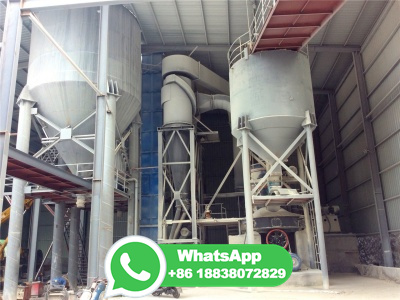
WEBApr 4, 2012 · Quality requirements of iron ore for iron production. L. Lu, ... D. Zhu, in Iron Ore, 2015 Summary. The BF ironmaking process is currently the dominant process for providing steelmaking raw materials worldwide. However, the BF process relies heavily on metallurgical coke and involves cokemaking and sintering operations, which often .
WhatsApp: +86 18203695377
WEBApr 1, 2022 · Australia's role in the zerocarbon steel transition. Given the earliernoted huge role of Australia in the global supply of iron ore (37% of global production) and metallurgical coal (19%), but only tiny role (%) in global steel production, it is necessary to examine what part Australia might play in the decarbonisation of the sector.
WhatsApp: +86 18203695377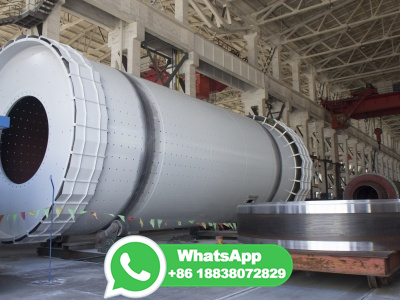
WEBAug 3, 2023 · The process involves three primary raw materials: iron ore, coke (a highcarbon form of coal), and limestone. These materials are charged into the blast furnace, and intense heat generated by burning coke causes a chemical reaction with iron ore, leading to the reduction of iron oxide to produce molten iron and carbon monoxide gas.
WhatsApp: +86 18203695377
WEBIron ore pellets are marblesized balls of iron ore that are fused with clay for transportation and used in steel manufacture. The process of making pellets from iron ore is called pelletizing. The manufacture of steel from lowgrade iron ore involves processes like mining, crushing, separating, concentrating, mixing, pelletizing, and shipping.
WhatsApp: +86 18203695377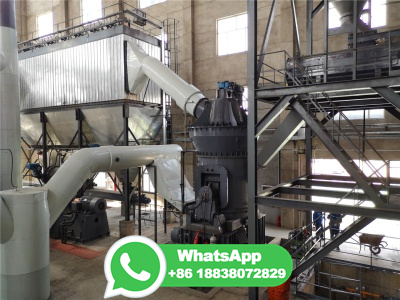
WEBJul 3, 2023 · The journey of steel manufacturing begins in the blast furnace, a towering structure designed to extract iron from iron ore. The process involves the reduction of iron ore into molten iron through a series of chemical reactions. The blast furnace operates at high temperatures, typically around 1,500 degrees Celsius (2,732 degrees Fahrenheit ...
WhatsApp: +86 18203695377
WEBIts main ore, is bauxite, which contains aluminium oxide; Aluminium is higher in the reactivity series than carbon, so it cannot be extracted by reduction using carbon; Instead, aluminium is extracted by electrolysis Diagram showing the extraction of aluminium by electrolysis. Bauxite is first purified to produce aluminium oxide, Al 2 O 3
WhatsApp: +86 18203695377
WEBJan 1, 2024 · In summary, understanding the steel making process from iron ore involves a deep appreciation of the technical processes and principles that transform a naturally occurring mineral into a versatile and robust material. Its evolution from ore to a finished steel product is not just a tale of metallurgical processes, but also one of human ...
WhatsApp: +86 18203695377
WEBAug 10, 2015 · The test involves heating 18 pellets in a size range of 10– ... The amount of liquid formed in the sintering process of iron ore pellets must be high enough to bond the pellet, ... are acknowledged for funding this work. Karelsky Okatysh is acknowledged for manufacturing the test pellets. The Center of Microscopy and .
WhatsApp: +86 18203695377
WEBA method used to release iron metal from its ore involves _____. burning leaves ... electrolysis. The process used to separate copper from its ore is _____ volume. A cubic centimeter (cm³) is a unit for measuring _____. density. Which of the following is a property that could be used to identify an element? mass. An unchanging measurement of ...
WhatsApp: +86 18203695377
WEBDec 23, 2022 · This process involves adding chemicals to the milled ore to separate the copper from the rest of the metals present. ... The first step in the copper manufacturing process is refining. Copper ore that is mined from the earth is typically mixed with other minerals, such as iron, sulfur, and silica. ...
WhatsApp: +86 18203695377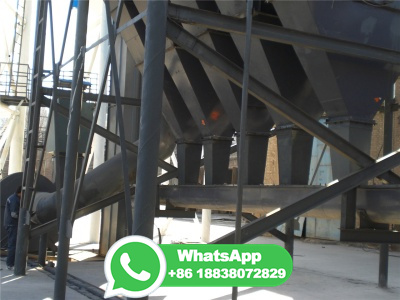
WEBNov 1, 2023 · Aluminum demand has increased with modernization of our society. As the primary source of aluminum is bauxite ore, this has resulted in more accumulation of bauxite residue. A bauxite residue typically contains 15–25% of alumina depending on the origin of its ore and process conditions. Along with alumina, it also contains iron, .
WhatsApp: +86 18203695377
WEBmetal. Smelting of iron ore involves ________. dissolving the ore in hot water to separate iron and aluminum. oxidizing iron to ferric oxide and then adding silicon and boron. crushing and heating the ore at its melting point. heating beyond iron's melting point and combining the material with carbon. washing the ore with acid to extract iron.
WhatsApp: +86 18203695377
WEBThe manufacture of iron from iron ore involves the process of a) Oxidation b) Reduction c) Fractional distillation d) Electrolysis. Login . Dark Mode. Login with Google. Menu. H. ... The manufacture of iron ore involves the process of reduction. Important ores of iron: Haematite, Magnetite.
WhatsApp: +86 18203695377
WEBSep 26, 2019 · Manufacturing Process of Copper. Copper processing is a complex process that involves many steps as the manufacturer processes the ore from its raw, mined state into a purified form for use in many industries. Copper is typically extracted from oxide and sulfide ores that contain between and % copper.
WhatsApp: +86 18203695377
WEBMay 13, 2024 · The Steel Manufacturing Process. The steel production process is a multifaceted journey that begins with extracting and processing iron ore, a primary raw material essential to steel making. Iron ore undergoes a series of refining steps to extract the iron content, culminating in the creation of molten iron. This molten iron is then .
WhatsApp: +86 18203695377
WEBOct 23, 2017 · The pig iron itself does not have much use but it finds a great number of appliions when converted into steel alloys in the steel industry. The process of manufacturing pig iron is a bit complied. The following steps explain the same as simply as possible. Raw MaterialsThe raw materials used in the blast furnace to .
WhatsApp: +86 18203695377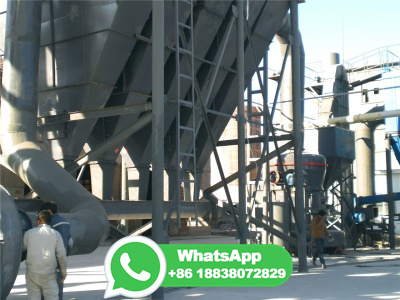
WEBJun 30, 2023 · Concentrating the ore. This simply means getting rid of as much of the unwanted rocky material as possible before the ore is converted into the metal. In some cases this is done chemically. For example, pure aluminum oxide is obtained from bauxite by a process involving a reaction with sodium hydroxide solution.
WhatsApp: +86 18203695377
WEBJul 10, 2023 · The cement manufacturing process involves the extraction and processing of raw. materials, such as limestone, cla y, and shale, which are t hen heated in a kiln at high temperatures to form ...
WhatsApp: +86 18203695377
WEBStep 1: Cargo preparation. In the steel industry, the raw material for steel production is iron ore. And in the first stage of the production process for this material, iron ore is agglomerated using lime and coke fines. At the end of this step, the resulting product is called sinter. The charcoal used is processed in the coke oven plant and ...
WhatsApp: +86 18203695377
WEBManufacturing of cement involves various raw materials and processes. Each process is explained chemical reactions for manufacture of Portland Cement.
WhatsApp: +86 18203695377
WEBmanufacture of iron from iron ore involves in the process of. manufacture of iron ore involves the process is manufacture of iron ore involves the process is Using iron to clean steelmaking, a very dirty business. Dec 16, 2013 . But manufacturing iron and steel is an energy intensive process . Read More
WhatsApp: +86 18203695377
WEBIron making. The primary objective of iron making is to release iron from chemical combination with oxygen, and, since the blast furnace is much the most efficient process, it receives the most attention here. Alternative methods known as direct reduction are used in over a score of countries, but less than 5 percent of iron is made this way.
WhatsApp: +86 18203695377
WEBIron is extracted in a large container called a blast furnace from its ore, hematite Modern blast furnaces produce approximately 10,000 tonnes of iron per day The blast furnace. Diagram showing the carbon extraction of iron
WhatsApp: +86 18203695377
WEBSteelmaking. Steel mill with two arc furnaces. Steelmaking is the process of producing steel from iron ore and/or scrap. In steelmaking, impurities such as nitrogen, silicon, phosphorus, sulfur and excess carbon (the most important impurity) are removed from the sourced iron, and alloying elements such as manganese, nickel, chromium, carbon and ...
WhatsApp: +86 18203695377